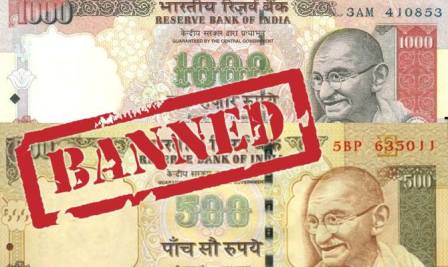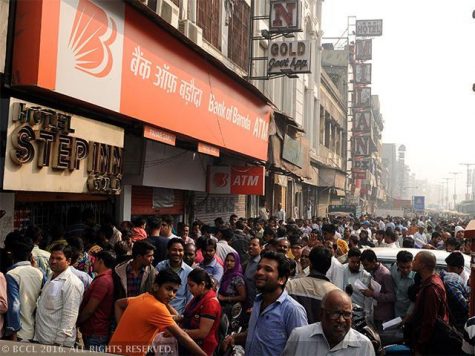India’s Demonetization And Its Impacts

November 29, 2016
INDIA: The demonetization of ₹500 and ₹1000 notes was a step taken by the Government of India on November 8, 2016. The announcement was made by prime minister Narendra Modi around 8:30pm in which he declared the circulation of ₹500 and ₹1000 notes as invalid from midnight of the same day and announced the issuance of new ₹500 and ₹2000 notes in exchange for old notes. This move is made to stop notes used in funding terrorism as well as to remove black money in the country.
The ₹100,₹50,₹20 and ₹10 notes continue to be legal denominations and are unaffected by the policy. The Reserve Bank of India (RBI) has laid a detailed procedure for exchanging old banned notes with new ₹500,₹2000, and old ₹100 notes. A lot of money has been converted to trash after the enforcement of demonetization by the government of India. The citizens of India have until December 30th, 2016 to exchange their old notes. Initially, the limit is fixed at ₹4000 per person. However, exceptions are given to petrol, CNG and gas stations, government hospitals, railway and airline booking counters, dairy and grocery stores to accept the old currency bills.

The scarcity of cash due to the demonetization has led to chaos and most people are facing difficulties to exchange the old notes as there is a rush outside ATMs and banks. However, urban cities in the country are not greatly affected by this policy, the people in rural areas are largely affected by it. This situation has now become a daily routine for millions of people waiting to exchange their notes. To add to this problem, ATMs are running out of cash after few hours of being functional and just about half of the ATMs in the whole country are functional.
Though this policy is leading to chaos in the country, it will benefit India in the future. This decision was taken to check the flow of black money and to tackle the problem of terrorism which was being funded with fake currency in the country. Due to this policy, a lot of people are using debit and credit cards for daily purchases and the use of cash has reduced. It is truly said, “no pain, no gain” which shows that people in India would have to go through a difficult time and suffer but this will be advantageous to India. Indians have adopted this very well and have accepted the fact that they’ll have to live with this for a few days. There will be some delay but when the new currency starts merging into the system, things will be back to normal. The United States too have been successful in doing the same with their currency in the past but unlike India, they stopped the printing of large denomination notes, so even though those currency notes are a legal tender till today, they are no more in the system.
When this policy fits in the system and the daily lives of people in India, things will be back to normal. This rule will surely curb corruption, check black money, and stop funding of terrorism with fake currency. There is no doubt that it was a righteous step taken by prime minister Narendra Modi and will benefit India.
